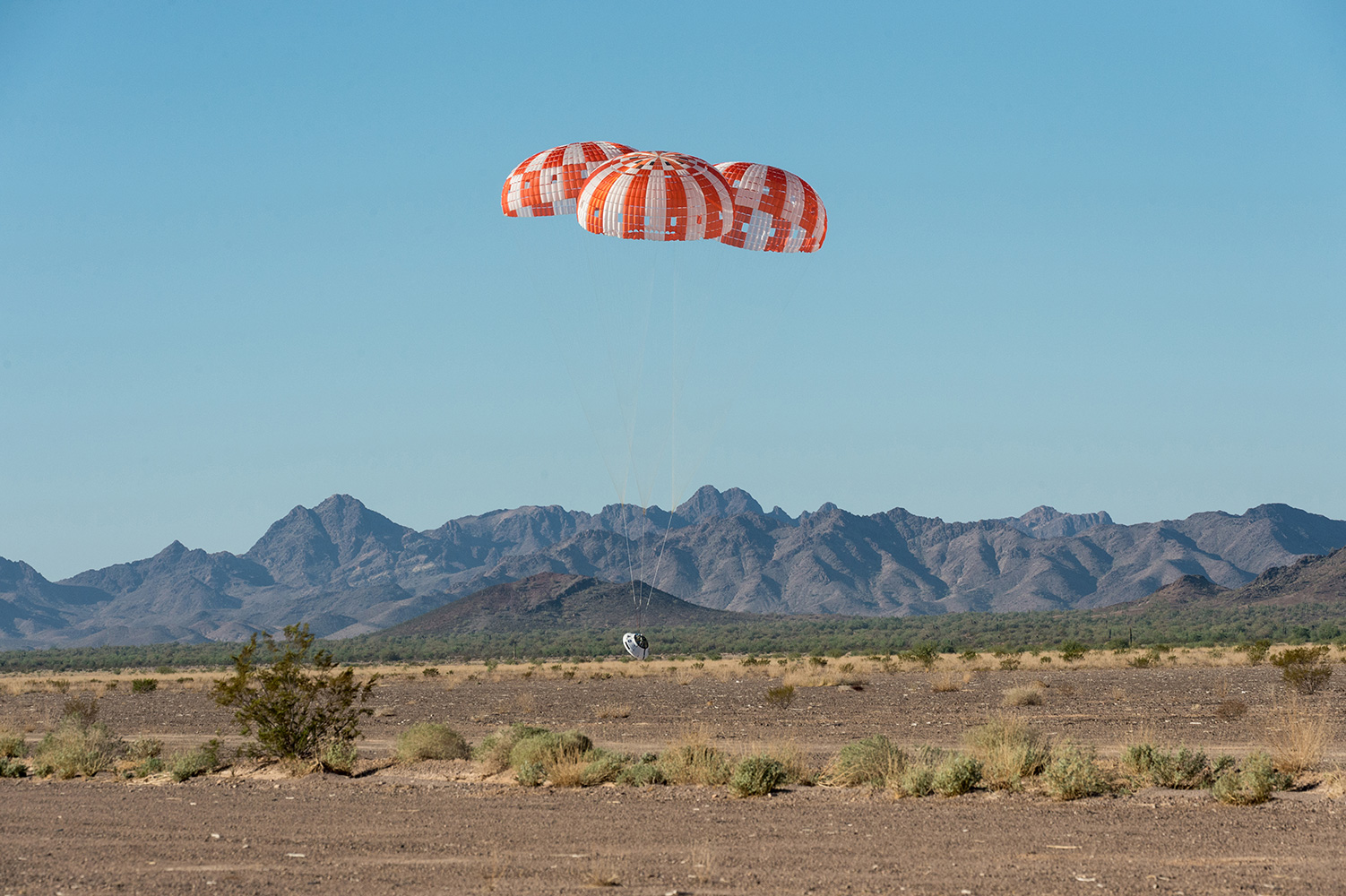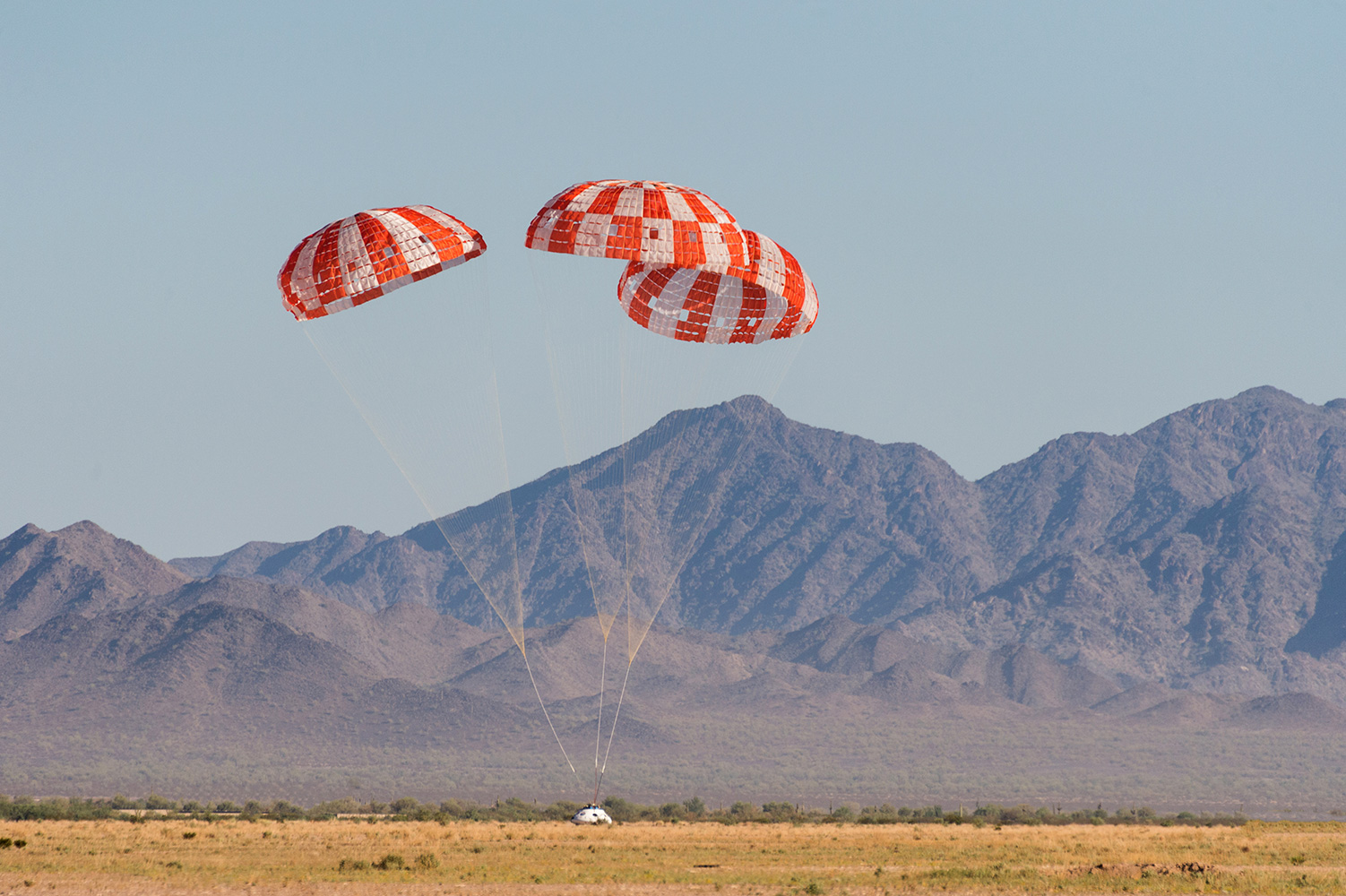NASA has completed the final test to qualify Orion’s parachute system for flights with astronauts, checking off an important milestone on the path to send humans on missions to the Moon and beyond.
Over the course of eight tests at the U.S. Army’s Yuma Proving Ground in Arizona, engineers have evaluated the performance of Orion’s parachute system during normal landing sequences as well as several failure scenarios and a variety of potential aerodynamic conditions to ensure astronauts can return safely from deep space missions.
“We’re working incredibly hard not only to make sure Orion’s ready to take our astronauts farther than we’ve been before, but to make sure they come home safely,” said Orion Program Manager Mark Kirasich. “The parachute system is complex, and evaluating the parachutes repeatedly through our test series gives us confidence that we’ll be ready for any kind of landing day situation.”
The system has 11 parachutes, a series of cannon-like mortars, pyrotechnic bolt cutters, and more than 30 miles of Kevlar lines attaching the top of the spacecraft to the 36,000 square feet of parachute canopy material. In about 10 minutes of descent through Earth’s atmosphere, everything must deploy in precise sequence to slow Orion and its crew from about 300 mph to a relatively gentle 20 mph for splashdown in the Pacific Ocean.
The parachute system is the only system that must assemble itself in mid-air and must be able to keep the crew safe in several failure scenarios, such as mortar failures that prevent a single parachute type to deploy, or conditions that cause some of the parachute textile components to fail.
During the final test, which took place Sept. 12, a mock Orion was pulled out from the cargo bay of a C-17 aircraft flying higher than 6.5 miles. The protective ring around the top of Orion that covers the parachute system was jettisoned and pulled away by the first set of Orion’s parachutes, then the remaining parachutes were deployed in precise sequence.
Additionally, Orion parachute engineers have also provided considerable insight and data to NASA’s Commercial Crew Program partners. The knowledge gained through the Orion program has enabled NASA to mature computer modeling of how the system works in various scenarios and help partner companies understand certain elements of parachute systems. In some cases, NASA’s work has provided enough information for the partners to reduce the need for some developmental parachute tests, and the associated expenses.
Orion will first fly with astronauts aboard during Exploration Mission-2, a mission that will venture near the Moon and farther from Earth than ever before, launching atop NASA’s Space Launch System rocket—which will be the world’s most powerful rocket. The parachutes for Orion’s upcoming uncrewed flight test, Exploration Mission-1, already are installed on the vehicle at Kennedy Space Center in Florida.




























